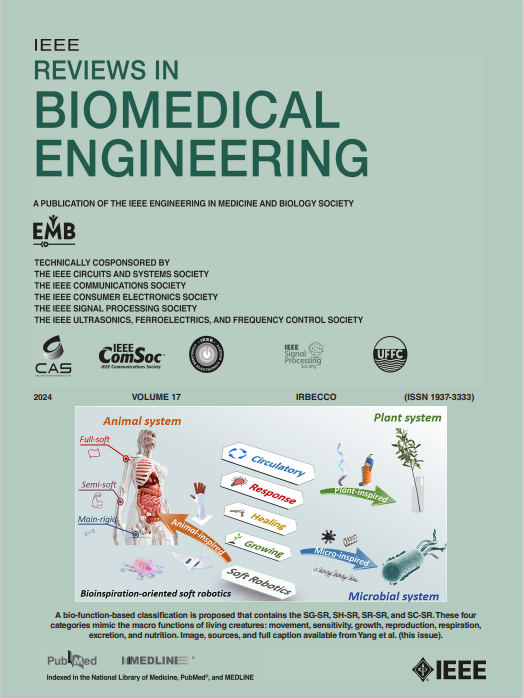基于多模态感觉反馈的组织检查训练机器人模拟器
IF 17.2
1区 工程技术
Q1 ENGINEERING, BIOMEDICAL
引用次数: 5
摘要
手工组织检查仍然是临床实践中的一项重要技术。有效的应用取决于感觉运动协调的技能,主要涉及触觉、视觉和听觉反馈。临床医生必须学习的技能可以是微妙的,比如通过呼吸调节手指压力、选择触诊动作、监测触诊时非自愿的面部和声音表情,以及将疼痛表情作为信息来源和身体检查的约束。在尝试真正的患者之前,患者模拟器可以为新手医生提供一个安全的学习平台。本文首次回顾了用于训练的最先进的医疗模拟器,考虑提供多模式反馈,以学习尽可能多的手动检查技术。该研究总结了模拟不同医疗条件并提供不同类型反馈模式的组织检查训练设备的最新进展。还分析了疼痛表达、组织建模、驱动和传感的发展机遇,以支持未来设计有效的组织检查模拟器。本文章由计算机程序翻译,如有差异,请以英文原文为准。
Robotic Simulators for Tissue Examination Training With Multimodal Sensory Feedback
Tissue examination by hand remains an essential technique in clinical practice. The effective application depends on skills in sensorimotor coordination, mainly involving haptic, visual, and auditory feedback. The skills clinicians have to learn can be as subtle as regulating finger pressure with breathing, choosing palpation action, monitoring involuntary facial and vocal expressions in response to palpation, and using pain expressions both as a source of information and as a constraint on physical examination. Patient simulators can provide a safe learning platform to novice physicians before trying real patients. This paper reviews state-of-the-art medical simulators for the training for the first time with a consideration of providing multimodal feedback to learn as many manual examination techniques as possible. The study summarizes current advances in tissue examination training devices simulating different medical conditions and providing different types of feedback modalities. Opportunities with the development of pain expression, tissue modeling, actuation, and sensing are also analyzed to support the future design of effective tissue examination simulators.
求助全文
通过发布文献求助,成功后即可免费获取论文全文。
去求助
来源期刊

IEEE Reviews in Biomedical Engineering
Engineering-Biomedical Engineering
CiteScore
31.70
自引率
0.60%
发文量
93
期刊介绍:
IEEE Reviews in Biomedical Engineering (RBME) serves as a platform to review the state-of-the-art and trends in the interdisciplinary field of biomedical engineering, which encompasses engineering, life sciences, and medicine. The journal aims to consolidate research and reviews for members of all IEEE societies interested in biomedical engineering. Recognizing the demand for comprehensive reviews among authors of various IEEE journals, RBME addresses this need by receiving, reviewing, and publishing scholarly works under one umbrella. It covers a broad spectrum, from historical to modern developments in biomedical engineering and the integration of technologies from various IEEE societies into the life sciences and medicine.
 求助内容:
求助内容: 应助结果提醒方式:
应助结果提醒方式:


